R&I Director, Galanakis Laboratories
Adjunct Professor, Taif University
Director, Food Waste Recovery Group
Editor-in-Chief, Discover Food
Editor-in-Chief, Discover Environment
Email: charismgalanakis@gmail.com
Food loss and waste constitute a pressing global challenge of immense proportions, resulting in the squandering of approximately one-third of the planet’s food production, equivalent to a staggering 1.3 billion tons on an annual basis (FAO, 2011). To confront this critical issue, governments and international organizations are taking substantial measures. This is exemplified by the United States’ resolute commitment to reducing food waste by an impressive 50% by the year 2030, as declared by the United States Department of Agriculture (USDA, 2017), and the unwavering efforts of the European Union (EU) in the same direction (EC, 2017). The urgency of this matter is further underscored by the United Nations’ Sustainable Development Goals (SDGs), particularly the pivotal SDG Target 12.3, which emphasizes the need to reduce global food waste per capita and mitigate food loss within the intricate web of production and supply chains, all by the year 2030 (UN, 2017).
Effectively combating food loss necessitates a clear differentiation between the distinct concepts of “food loss” and “food waste,” as defined by the Food and Agriculture Organization (FAO) to establish a common ground for addressing this multifaceted challenge. “Food loss” specifically denotes the reduction in either the quantity or quality of food attributed to actions and decisions taken within the supply chain by food suppliers, with retail, food service providers, and consumers being exempt from this category. In contrast, “food waste” encapsulates the decrease in the quantity or quality of food resulting from actions and decisions undertaken by retailers, food services, and consumers themselves (FAO, 2019). Effectively addressing this intricate issue necessitates a multifaceted and comprehensive approach, with innovative technologies emerging as a pivotal component in the quest to combat food loss and waste.
A critical component of the strategy to combat food loss is the identification of Critical Loss Points (CLPs) within the intricate labyrinth of the food supply chain, each of which represents a pivotal juncture where interventions can yield significant reductions in food loss. These CLPs are exemplified by stages such as harvesting, on-farm storage, packing and transportation, and processing, and they each present unique challenges and opportunities for innovation, as elucidated in various studies (WRI, 2019b; FAO, 2014; 2019b). Collaborative efforts among food providers, retailers, and suppliers are imperative, as demonstrated by initiatives like the New “10x20x30” Food Loss and Waste Initiative (WRI, 2019a). Innovative technologies, including but not limited to IoT sensors, advanced cold chain management systems, cutting-edge packaging solutions, and pioneering waste valorization techniques, play a pivotal role in mitigating food loss at these pivotal CLPs. Moreover, these technologies, when integrated with data-driven decision-making and precision agriculture practices, present promising avenues to reduce food loss, thus contributing to the creation of a more sustainable and resilient food supply chain (HLPE, 2014; Fonseca & Vergara, 2015). Effective collaboration among governments, organizations, and industry stakeholders is quintessential to harness the full potential of these groundbreaking innovations, enabling the effective and comprehensive addressing of the global food loss challenge.
References
European Commission Food Safety Home Page; http://ec.europa.eu/food/safety/food_waste/eu_actions_en/accessed December 20, 2017.
FAO (2011). Global food losses and food waste – Extent, causes and prevention. Rome
FAO (2014). Food loss assessments: causes and solutions. Case studies in small-scale agriculture and fisheries subsectors. Kenya: banana, maize, milk, fish. Global Initiative on Food Loss and Waste Reduction – Save Food. Rome.
FAO. (2019). The State of Food and Agriculture 2019. Moving forward on food loss and waste reduction. Rome. Licence: CC BY-NC-SA 3.0 IGO.
FAO. (2019b). Dataset of food loss and waste estimates from grey literature, national and sectoral reports. Online statistical working system for loss calculations (available at http://www.fao.org/food-loss-and-food-waste/flw-data).
Fonseca, J., & Vergara, N. (2015). Logistics in the horticulture supply chain in Latin America and the Caribbean. Regional report based on five country assessments and findings from regional workshops. Rome, FAO.
High Level Panel of Experts on Food Security and Nutrition of the Committee on World Food Security (HLPE) (2014). Food losses and waste in the context of sustainable food systems. Rome.
United Nations (2017) United Nations Sustainability Development Goals Home Page. http://www.un.org/sustainabledevelopment/sustainableconsumption-production/ accessed December 20, 2017
United States Department of Agriculture. USDA and EPA Join with Private Sector, Charitable Organizations to Set Nation’s First Food Waste Reduction Goals (2017). https://www.usda.gov/media/press-releases/2015/09/16/usda-and-epa-join-private-sector-charitableorganizations-set accessed December 20, 2017.
World Resource Institute – WRI (2019a). Press release, September 23, 2019. https://www.wri.org/news/2019/09/release-major-food-retailers-providers-join-new-10x20x30-food-loss-and-waste-initiative.
World Resource Institute-WRI (2019b). Reducing food loss and waste: Setting a Global Action Agenda. With the support of The Rockefeller Foundation. Accessed December 3rd, 2019. https://www.wri.org/publication/reducing-food-loss-and-waste-setting-global-action-agenda.

